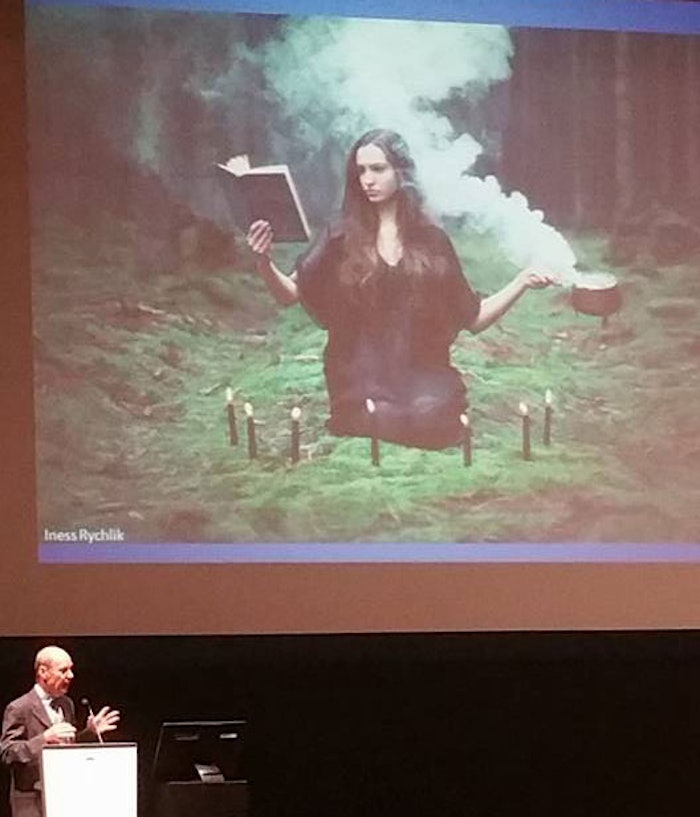
Zürich—The 23rd IFSCC Congress, held Sept. 21-23, 2015, reported “more facts and less illusions” to some 550+ delegates from across the globe at the forefront of cosmetic product innovation. (View our photo album on Facebook.)
(Continued from Part I)
Skin Magic, Epigenetics and Google Earth Imaging
Day one of the conference opened with a keynote lecture by Marek Haftek, of Université Lyon, who described the stratum corneum (SC) as a "magic cauldron” brewing to its fullness. "While the SC is essentially dead, the 'fire beneath the cauldron' keeps it evolving and adapting to maintain barrier function—that’s the key," he said.
Haftek explained the SC is more than its composition, but also its structure. He likened testing on skin replicas to his grandson playing Minecraft in that one can build a model and test effects. During the Q&A session, he explained how redundancy in skin is important to maintain barrier function.
Nidhin Raj, of the UCL School of Pharmacy in London, presented next on a study comparing the natural moisturizing factors and proteases in African, Albino African and Caucasian skin. His work showed that plasmin levels increased as photo-exposure increased, suggesting it could be used as a marker for cornified envelope (CE) maturation. His take-away message was: “Maturation of the CE is needed for optimal barrier function.”
Sevda Cordier-Dirikoc, of BIOalternatives, described a new androgen-sensitive sebocyte line as a tool for developing anti-acne products—specifically, to test for sebocyte differentiation. To study the impact of active androgens in sebocytes, the company cloned a stable human sebocyte cell line expressing a fully functional androgen receptor.
Next, Pauline Rouaud of SILAB explored epigenetics and their potential as targets for innovative cosmetics. She explained how the epigenome is merely a “set” of mechanisms that can affect the genome without impacting the DNA, but by influencing the translation of messages. Actives developed to act on microRNA, for example, were found to restore inhibited transcriptions.
After a break to view posters, visit exhibits and refill coffee cups, the morning session continued with a keynote lecture by Karsten König, of Jenlab GmbH and Saarland University. He discussed novel laser biopsies of the skin using multiphoton tomography.
Aya Sakata, from POLA Chemical Industries, described research in skin sagging related to loss in skin elasticity and the role of the retinacula cutis (RC). Sagging scores and viscoelasticity data of deeper skin layers were correlated with the density of the RC. In particular, sparse RC was strongly correlated with upper cheek sagging and a loss of viscoelasticity.
Finally, Walter Arkesteijn, of InnoFaith beauty sciences, wrapped up the day with a discussion of how advances in imaging and image processing are advancing the industry. He explained how consumers see the skin as light reflects through its various components, such as melanin, and how the human mind searches for patterns that look like faces.
To evaluate the face, he described what he called a “Google Earth”-like technology, also influenced by the gaming industry, to take a three-dimensional snapshot of the face and turn it into two dimensions while also correcting for facial angles. The idea was to potentially use this system to test for makeup coverage, color correction and more.
His talk drew a good deal of interest from the audience, who asked “Can you use technologies like this to ‘trick’ what the viewer sees? For example, under the right lighting conditions?” To which, he replied, “We are not currently using it for this, but perhaps in the future.”
With the morning session closed, attendees flowed into the exhibit area for a buffet lunch, networking and a moment to “digest” the day’s knowledge thus far.
Formula Fantasies, Bubbling Mascara and the 'Heartbeat' of Hair
The afternoon opened with a keynote lecture by Majella Lane, of the UCL School of Pharmacy in London. She presented on “formulation fantasties”—a topic inspired by the Cosmetics & Toiletries article published in July 2013. She gave examples of claims made that misrepresent the facts about formulations used on the skin for personal care.










